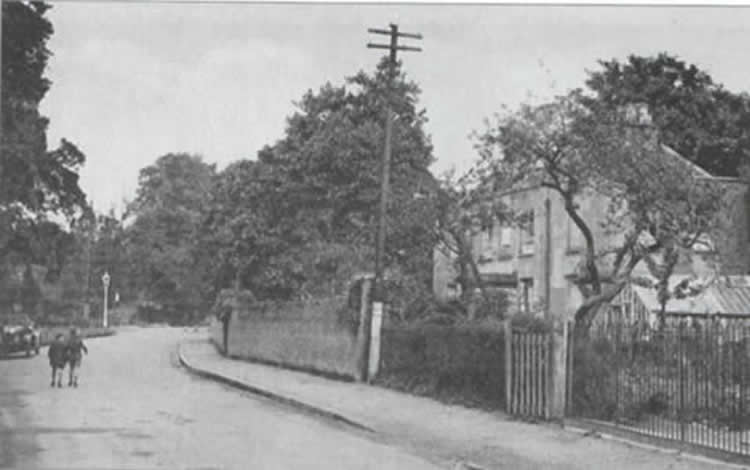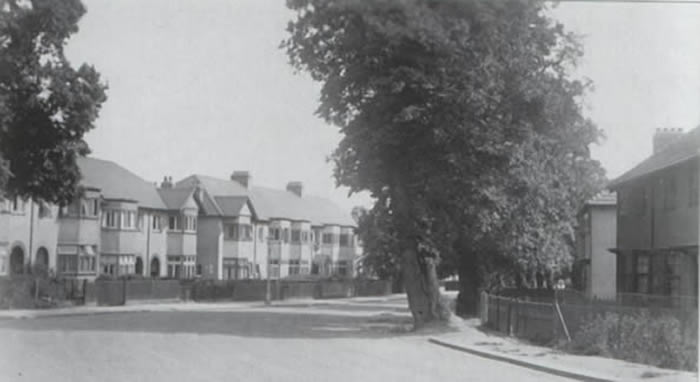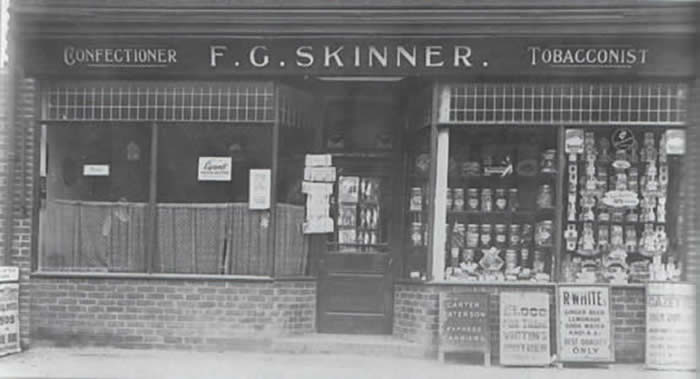


 |
| Above -Greenford schoolhouse, Oldfield Lane, 1935. It was built in 1878 by the Revd Edward Betham of Holy Cross, Greenford. In 1939 Sir Albert Richardson's New Holy Cross Church was built. |
 |
| Above - Costons Lane c 1925. The lane was split by the Greenford Road, which was built in 1924. This view shows nos 108 to 90 , on the left of Costons Lane. |
 |
| Above - Frederick G Skinner's confectioner's shop, Oldfield Lane c 1930. The shop was on the corner of Ravenor Park and Oldfield Lane. |